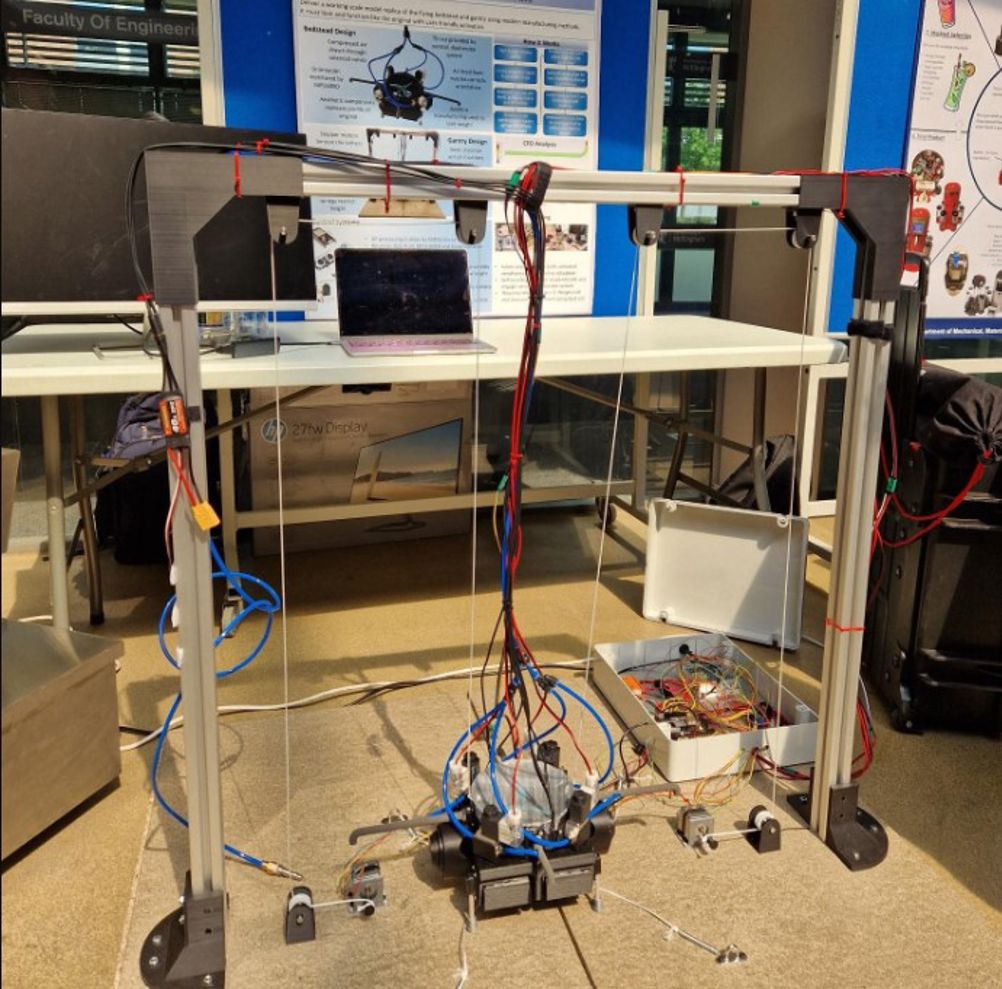
Built and tested by Rolls-Royce in Hucknall, the TMR was the first jet-lift aircraft to fly anywhere in the world, with its inaugural tethered flight taking place in 1953, followed by its first free flight the following year.
Developed to celebrate the 70th anniversary of this aviation landmark, the working replica will shortly go on display at the Rolls-Royce Heritage Centre and the Hucknall Flight Test Museum, where the original TMR was built and tested 70 years ago.
CLICK HERE FOR THE ENGINEER'S ARCHIVE COVERAGE OF THE ORIGINAL FLYING BEDSTEAD
Associate Professor Mark Jabbal, Aerospace Engineering Programme Director at the University of Nottingham, said: “Currently, there’s only one TMR on static display in the world, at the London Science Museum, so having our students build this working scaled replica means that more people around the country will be able to get a glimpse of this fascinating piece of aviation.
“Not many people are aware that Nottinghamshire is the birthplace of vertical jet lift technology, so this project has not only provided students with practical knowledge, but it’s also given them a greater understanding of our heritage and the part we played in aviation history.”
The replica was unveiled, alongside 30 other student projects, with several special guests in attendance, including Les Fenwick, a former Rolls-Royce TMR Engineer who worked on the original “Flying Bedstead” in the 1950s.
He said: “As soon as I saw the replica, I was taken back to when I was an apprentice more than 50 years ago and I thought: ‘That’s it’. The students have done a truly marvellous job and it’s made me feel a little bit emotional that my colleagues who are no longer with us aren’t able to see this fantastic recreation of the TMR we all worked tirelessly on. This time 50 years ago, we were responsible for a world first, and now, the students have done the same.”

Joseph Elliott, a Mechanical Engineering student who was part of the group to recreate the TMR, said: “Recreating the TMR in a compact form using modern manufacturing techniques proved to be a very challenging and ambitious project….Some of the main issues we encountered were the design of the pneumatics system, which allows the device to stabilise itself using compressed air and the electronics/control system. Also, development of the gantry safety system, which protects both the device and viewers, required much consideration.”










McMurtry Spéirling defies gravity using fan downforce
What a fun demonstration. I wonder if they were brave enough to be in the car when it was first turned over. Racing fan cars would be an interesting...